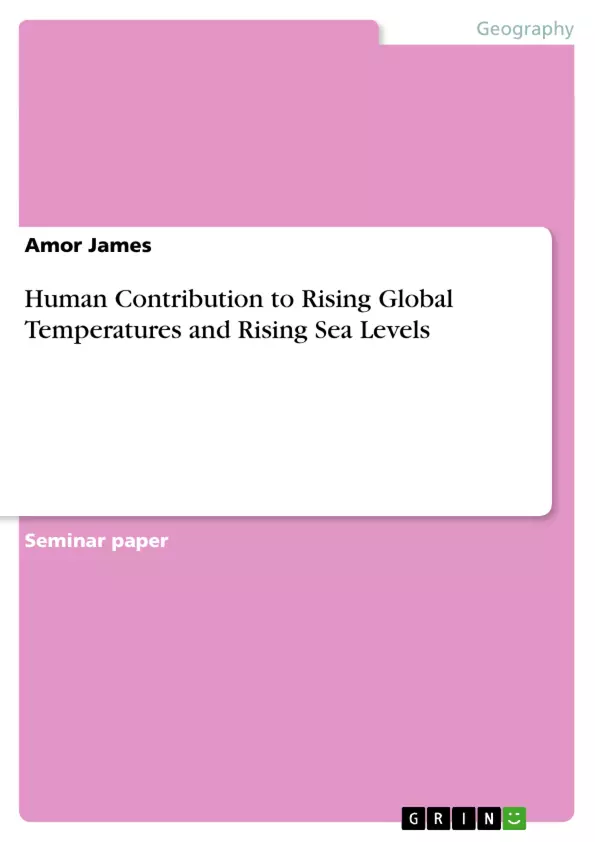The causes of rising sea levels is in a state of continuous debate, but increasing scientific research suggests that human activity is at least partial, if not the predominate cause of the rapid rise in ocean levels worldwide. High concentrations of CO2 and other GHGs released into the atmosphere from human consumption, industrialization and manufacturing attribute to rising global temperatures, which is in turn absorbed by the sea, causing the warming and expansion of oceans. The detrimental effects of warming oceanic temperatures is multifaceted. It leads to ocean freshening as a result of melting glaciers in the Arctic and Antarctic, which raises sea levels and it negatively impact on the survival of humans, flora, fauna and marine ecosystem. Furthermore, higher temperatures in global seas attribute to thermal expansion and eustatic rise, which is a key cause behind why the oceans are taking up more of the Earth’s surface. Thermal expansion also causes irreversible degradation of biodiversity and human habitat in coastal areas. Thus, this paper will explore how intensive human activity contributes to climate change which heats up sea temperatures and lead to ocean expansion and rising shore levels around the globe.
Inhaltsverzeichnis (Table of Contents)
- Eustatic Rise
- Rising GHG Emission and Higher Sea Levels
- Thermal Expansion and Ocean Freshening
Zielsetzung und Themenschwerpunkte (Objectives and Key Themes)
This paper aims to explore the relationship between human activity and rising global sea levels. It examines the role of human-induced climate change in causing eustatic rise, thermal expansion, and ocean freshening, which contribute to the overall increase in global sea levels.
- Human Activity and Climate Change
- Eustatic Rise and its Causes
- Greenhouse Gas Emissions and Global Warming
- Thermal Expansion of Oceans
- Ocean Freshening Due to Melting Ice Caps
Zusammenfassung der Kapitel (Chapter Summaries)
Eustatic Rise
This section discusses the scientific consensus on climate change and its connection to eustatic rise. It highlights the observed increase in global mean sea level (GMSL) over the past century, particularly the accelerated rate of rise since the 1990s. The text also explores the role of melting ice caps in contributing to eustatic rise, particularly in relation to the Industrial and Agricultural Revolutions.
Rising GHG Emission and Higher Sea Levels
This section examines the relationship between greenhouse gas (GHG) emissions and rising sea levels. It explores the historical connection between changes in global climate, including the Modern Warm Period, and human activity, specifically the combustion of fossil fuels. The text also discusses the impact of increased GHG concentrations on the greenhouse effect and subsequent warming of global temperatures and oceans.
Thermal Expansion and Ocean Freshening
This section focuses on the process of thermal expansion as a consequence of rising ocean temperatures. It explores how warming oceans expand, leading to increased sea levels. The section also discusses the role of ocean freshening, caused by melting glaciers, in contributing to rising sea levels.
Schlüsselwörter (Keywords)
This paper focuses on the key concepts of human-induced climate change, eustatic rise, thermal expansion, ocean freshening, greenhouse gas emissions, and the impact of these factors on rising global sea levels. It explores the role of human activities, such as the burning of fossil fuels and industrialization, in driving these changes.
- Arbeit zitieren
- Amor James (Autor:in), 2011, Human Contribution to Rising Global Temperatures and Rising Sea Levels, München, GRIN Verlag, https://www.grin.com/document/268210



